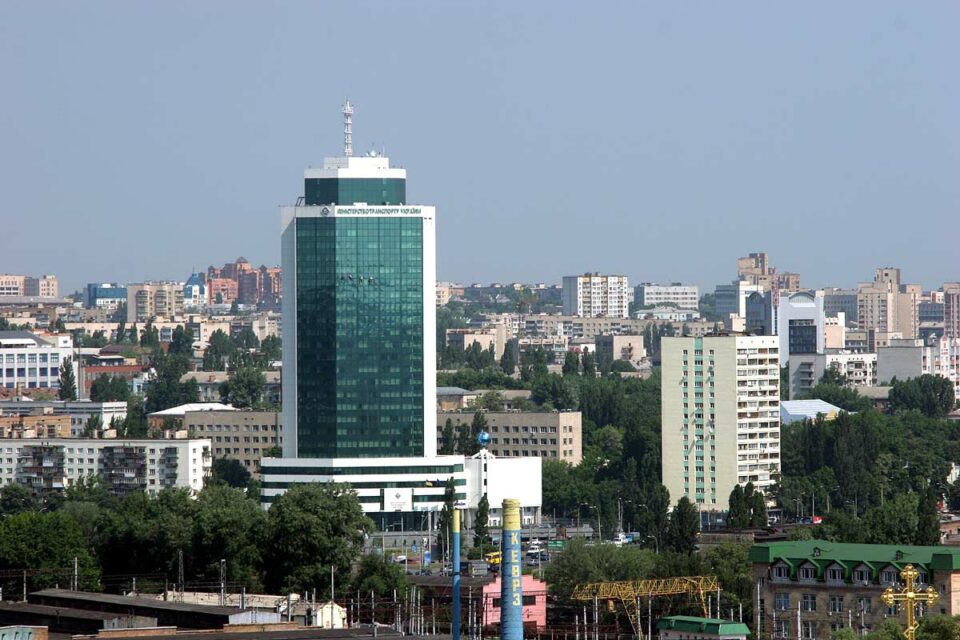Promises and reality: how MIU implements its own To Do List

Back in 2019, the Ministry of Infrastructure of Ukraine (MIU) has presented a kind of development plan and tasks under the promising title “To Do List”. It captured the main plans for 2020 and the next 5 years, however, not all points and goals were achieved, and the main problems in implementation were the eternal bureaucracy and lack of state budget funds.
USM has analyzed the promises and development plan of the MIU.
Beautiful plans
In early November 2019, the Minister of Infrastructure of Ukraine Vladislav Krykliy, being in Kharkiv, have presented the To Do List – a list of MIU tasks till the end of the year, for 2020 and for the next 5 years.
To make water transport accessible for business and passengers, the MIU has promised:
– to complete the creation of the E40 waterway;
– to renovate 4 locks (in 2020);
– to carry out dredging of the Dnieper river and the ports of Odessa, Pivdenny, Chornomorsk;
– to hold a concession in the ports of Olvia, Kherson, Mariupol, Nikolaev, Odessa and the Ferry complex in Chernomorsk.
So, there are 6 shipping locks on Dnieper, which include Kievsky, Kanevsky, Kremenchugsky, Dneprodzerzhinsky, ZRGS (Zaporozhye region of hydraulic structures) and Kakhovsky.
Significantly the projects for the concession of the first and container terminals, as well as the Ferry complex of the State Enterprise “MTP” Chornomorsk “are included in the Government-approved List of priority investment projects for the state until 2023.
At the same time, Vladislav Krykliy said that the Ukrainian side will ensure the implementation of dredging works under the E40 project on the Pripyat River until May 1, 2020.
E-40: deadlines dragged on
The E-40 waterway is a planned 2000 km long, navigable transport route that will connect Baltic and Black Seas.
So, last year on February 6th, the Minister of Infrastructure of Ukraine Vladislav Krykliy said that “the E-40 river route restoration project has entered the stage of practical implementation.”
Already in July 2020, dredging works began on the Pripyat River, which are part of the project.
The MIU also said that “Dutch companies are ready to share their experience and take a direct part in the implementation of Ukrainian projects for the development of inland waterway transport, in particular, the resumption of navigation on the Dnieper.”
Note that in total for the E-40 project, the Ukrainian government has allocated 12 million hryvnias (about 430 thousand US Dollars). According to the plans, the waterway will stretch from Gdansk to Poland, through the south of Belarus to Kherson and will become the longest in Europe – 25 times longer than the Panama Canal.
As USM wrote, the project had both supporters and opponents for a number of reasons, including the environmental issue. In addition, according to forecasts of industry participants, an incomplete, but large section of the E-40 will be able to function when problem areas on the Pripyat River are dredged in Ukraine. Also, for the development of the E-40 corridor, Ukraine needs to modernize the shipping locks on the Dnieper.
Repair of locks and delays due to funding
In 2020, they promised to repair 4 shipping locks; for these purposes, UAH 116.3 million (~4,15 million USD) was initially allocated in the state budget. However, the Parliament of Ukraine adopted amendments to the 2020 state budget (№ 3279-d), according to which funding was “stung” three times – up to UAH 39 million (~1,4 million USD). This is the amount allocated annually for the operating costs of the locks.
Only in November 2020, the Ministry of Infrastructure has managed to launch a program for the overhaul of shipping locks on the Dnieper. It became possible thanks to UAH 232.2 million (~8,3 million USD) received in August 2020 from the EU.
In early February 2021, a major overhaul began at the Kakhovsky lock. The work was reported by the state enterprise “Ukrvodshlyakh”. The renovation was supposed to be completed by the first week of March. However, the completion of the work was never reported.
Dredging on the river and in ports: slowly and steady
Initially, MIU did not announce specific dates, and the To Do List also included goals for the next 5 years.
Already in December 2019, the Ukrainian Sea Port Authorities (USPA) completed the planned dredging works on the Dnieper. So, during the year, we carried out dredging in the amount of about 800 thousand cubic meters, sweeping and bottom cleaning works with a total area of 227 sq. km and a length of 2733 km, survey work on 43.4 running km of waterways. At that time, such a volume of work was completed for the first time in the last 6 years.
At the end of March 2021, the “Danube” dredger caravan completed operational dredging in the water area of the outport of the Odessa seaport, in total it took a month to work.
The work was performed by the branch “Dredging Fleet” of the State Enterprise “USPU”. In the areas where the digging was carried out, the depths were brought to the passport 13.5 meters.
In the third quarter of this year, in the port of Chornomorsk, they promise to begin operational dredging at the berths, bringing the indicators to the passport depths. In addition, during the year, the port plans to repair the rear railways, berths, including overhaul of berth №2.
At the moment, at what stage of the dredging of the Pivdenny port is unknown, since the dates were not announced, and the USPA did not inform about the start of work and the approximate time frame. At the same time, back in 2019, the Antimonopoly Committee of Ukraine has recommended that the Administration of the seaports of Ukraine begin work on dredging the approach channel of the Pivdenny seaport as part of the development plan. At the same time, the AMCU said that the delay of the USPA may have signs of a violation.
Concessions and bureaucracy
Despite the fact that for some ports contracts have already been signed, and the concessionaires are known, the preparation of the transfer of ports is still underway.
The first port that went into concession was the Kherson Sea Commercial Port. So, on January 21, 2020, the Cabinet of Ministers officially announced the winner of the competition – it was the “Risoil-Kherson” company. The winner obtained the rights to operate the port for 30 years. Now the company must transfer 7% of its income to the state budget every year and UAH 12 million (~0,43 million USD) one-time payment.
Interestingly, the amount of investment obligations amounted to about UAH 318 million (~11,5 million USD), although initially the MIU counted on UAH 1.4 billion (~50 million USD).
The agreement on the transfer to the concession of the specialized seaport “Olvia”, located in Nikolaev, was concluded on August 20, 2020. According to the document, the Qatari company “QTerminals” will invest about UAH 3.4 billion (~123,6 million USD) in the development of the port. In addition, at least UAH 80 million (~2,9 million USD) will be invested in local infrastructure.
In turn, the Sea Trade Port “Chornomorsk” may become the third Ukrainian port, which will be transferred to the concession.
In the end of January 2020, Minister of Infrastructure Vladislav Krikliy, during the presentation of the winners of the first concession tenders in the ports of Ukraine, said that concession projects were already being prepared in the seaports of Mariupol, Berdyansk, Odessa and Chornomorsk.
“The next concession tender will be carried out in the seaport of Chornomorsk. We offer investors a container terminal and a ferry service there. Then – a competition in the seaport of Odessa, where investors should be interested in the passenger terminal and the hotel,”said Krikliy.
Also in March 2021, it became known that Kherson port, according to the head of the Ministry of Infrastructure Krikliy, should have been transferred by the end of March 2021, and the minister promised the transfer of Olvia “somewhere in the second half of autumn”.
And already in mid-April of this year, the preparation of the pre-feasibility study for the concession of the first and container terminals of the port of Chornomorsk was completed, and the MIU said that the preparation of a concept note for the concession project would begin soon.
Unfulfilled promises, alas, have become the norm for Ukraine, and not only for the maritime industry. After all, strategic planning and the implementation of these plans depending on government officials at all levels, from the Parliament and the Cabinet of Ministers to local representatives. And in such a multi-level chain there are many factors that are difficult to influence, and this is rarely spoken about publicly. This also applies to bureaucracy and insufficient funding, which later turns into larger-scale problems.
In addition, there are no new statements from the MIU about changing the deadlines for unfulfilled goals, and it remains only to assume and monitor when the promises will become reality.





